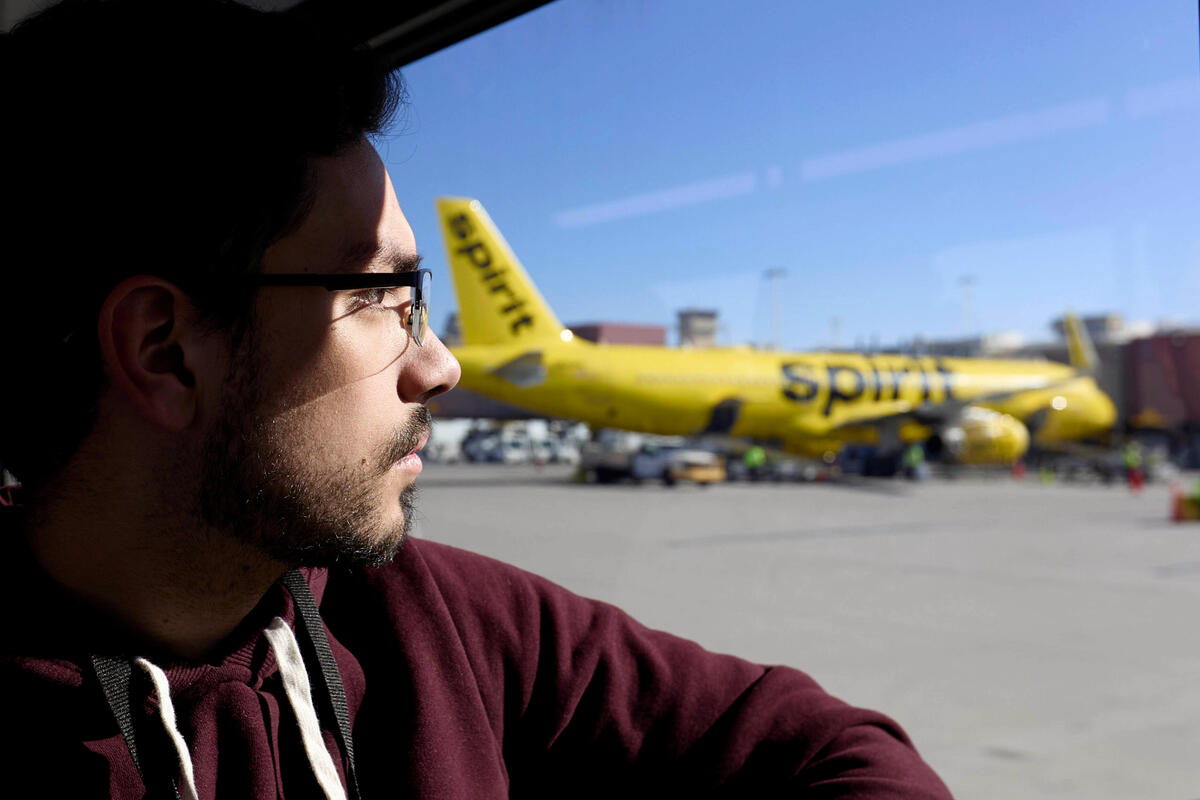We’ve all been there — shuffling through airport security, juggling carry-ons, rushing to our gate before boarding begins. For many of us, air travel feels routine, even tedious, leaving little time to marvel at the staggering complexity of it all.
Behind every routine flight is the story of engineering marvels, logistical precision, and cultural transformation. Modern aviation connects people, economies, and ideas on a global scale in ways we often overlook. The skies above the American West, once a symbol of untamed frontiers, now hum with the activity of a region shaped by international aviation.
In HON 410: Aviation in the West, Dan Bubb guides his Honors College students through this remarkable evolution. The course explores how aviation changed the cultural and economic fabric of the West, with particular focus on the last 50 years of aircraft innovation and multi-billion-dollar airport expansions to meet growing demand.
To close out the class, Bubb coordinates an exclusive behind-the-scenes tour of Harry Reid International Airport, offering students a firsthand look at the bustling operations of a modern aviation hub.
Why is it being taught?
“In most American history courses, aviation often is overlooked despite the fact that it played and continues to play a major role in our political, economic, social, and cultural growth and development,” says Bubb, an associate professor in residence in the Honors College.
A former airline pilot turned academic, Bubb has dedicated his career to studying aviation’s cultural and economic impact, particularly in the American West.
“I want students to understand that aviation and airports are a prominent part of the American West’s ethos and hold an important place in the historical narrative of our region.”
Who’s taking it?
The course is open to junior and senior Honors College students across all majors, attracting students from business, engineering, hospitality, history, sociology, and more.
“Part of the fun of this course comes from seeing how students connect what we cover to their own fields of study,” says Bubb.
What do class sessions look like?
Bubb’s dynamic teaching style blends lectures, group discussions, and interactive projects to keep students engaged. This semester, students designed their own airports, applying concepts learned throughout the course.
The class also welcomes guest speakers such as Brent Hathaway of the Lee School of Business, who shared his unique experience working in the aerospace industry.
Inside the Operations of an Aviation Hub
The semester culminates in a field trip to Harry Reid International Airport, where students get a firsthand look at the operations of a major aviation hub. From observing runways and taxiways to visiting passenger terminals and the fire station, the private tour offers a rare glimpse into the complexities of airport management.

The experience also emphasizes how Harry Reid International Airport is intrinsically linked with the other major airports — and therefore communities and economies — in our region.
“It’s a chance to see how everything we’ve discussed in class comes together in the real world,” Bubb says.
What’s something students might be surprised to learn?
During the airfield tour, students discover details like the slightly sloped design of Harry Reid’s runways, which helps planes gain momentum during takeoff in the desert heat.
To drive home the critical role of aviation in our community, students also learn that Harry Reid International Airport, alongside the airlines it supports, directly and indirectly contribute more than $30 billion to Southern Nevada’s economy. “That’s a story worth telling,” Bubb says.
Lessons for Everyone
The course offers valuable insights for anyone curious about the region’s development. “Airports are as essential and emblematic to the West’s story as railroads and Conestoga Wagons,” Bubb explains.
“Understanding their impact helps us appreciate how interconnected our world has become.”
The Reading List
For those eager to learn more:
- "Landing in Las Vegas: Commercial Aviation and the Making of a Tourist City" by Daniel Bubb
- "Sky As Frontier: Adventure, Aviation, and Empire" by David Courtwright
- "Hard Landing: The Epic Contest for Power and Profits that Plunged the Airlines into Chaos" by Thomas Petzinger Jr.
- "Going Places: Transportation Redefines the Twentieth Century West" by Carlos Schwantes
- "Conquest of the Skies: A History of Commercial Aviation in America" by Carl Solberg



